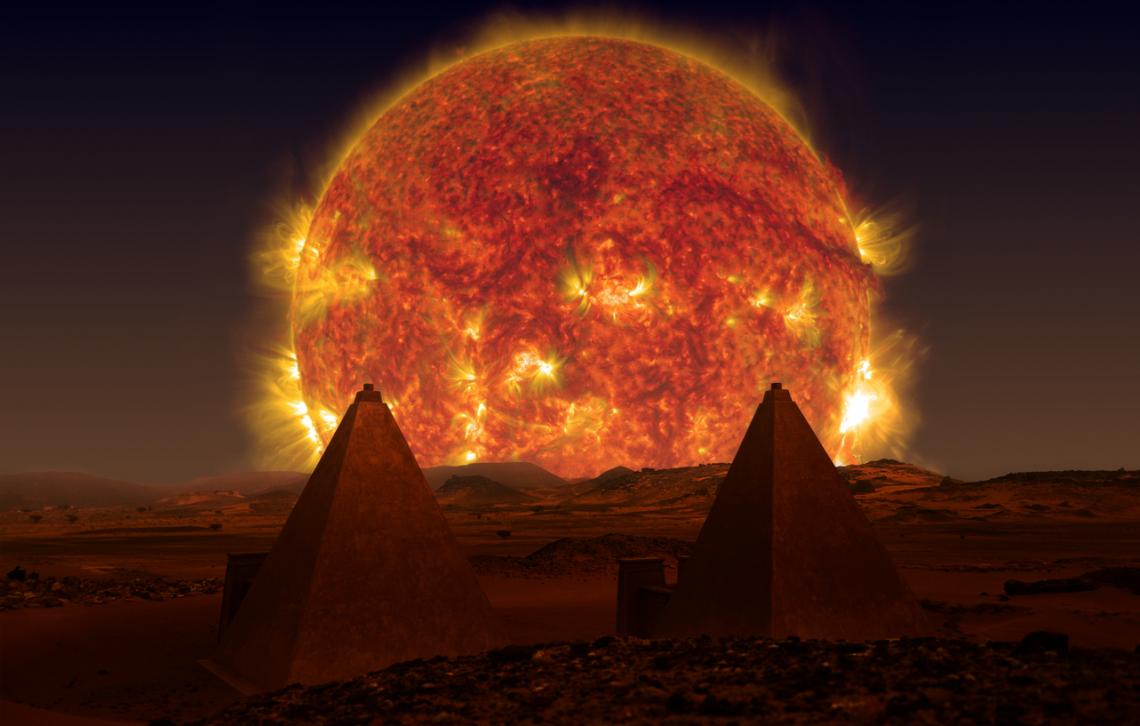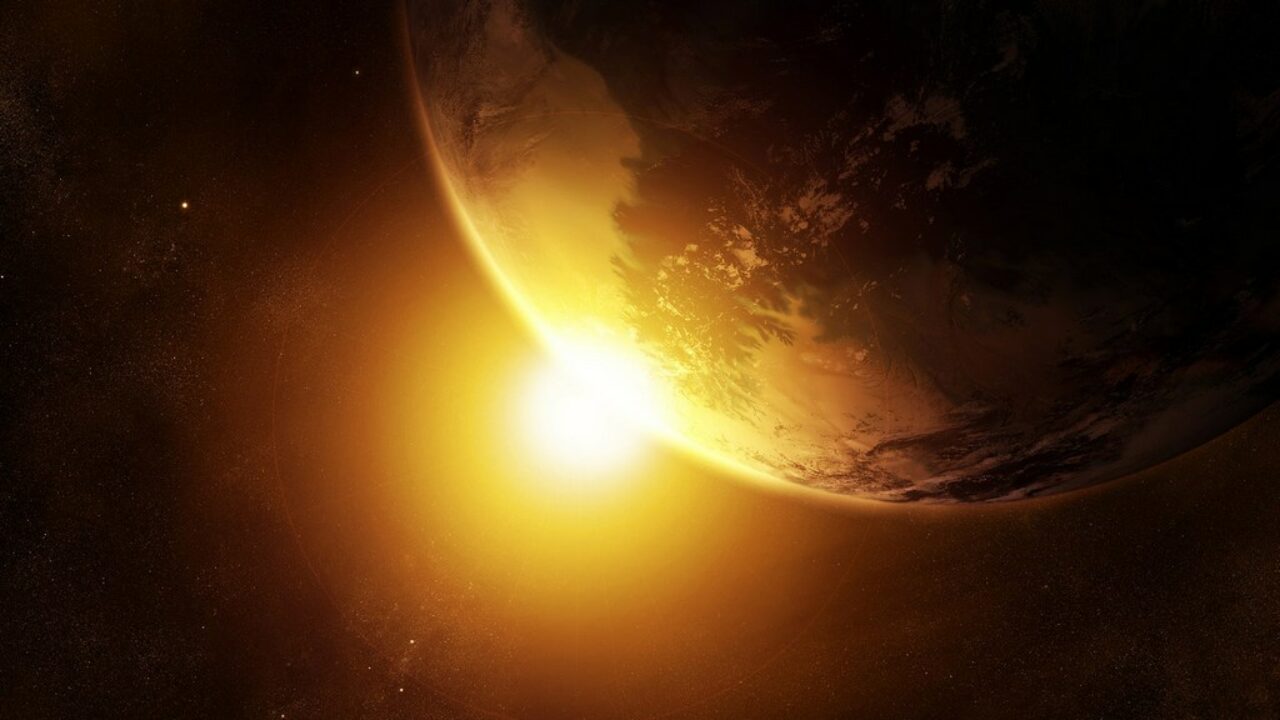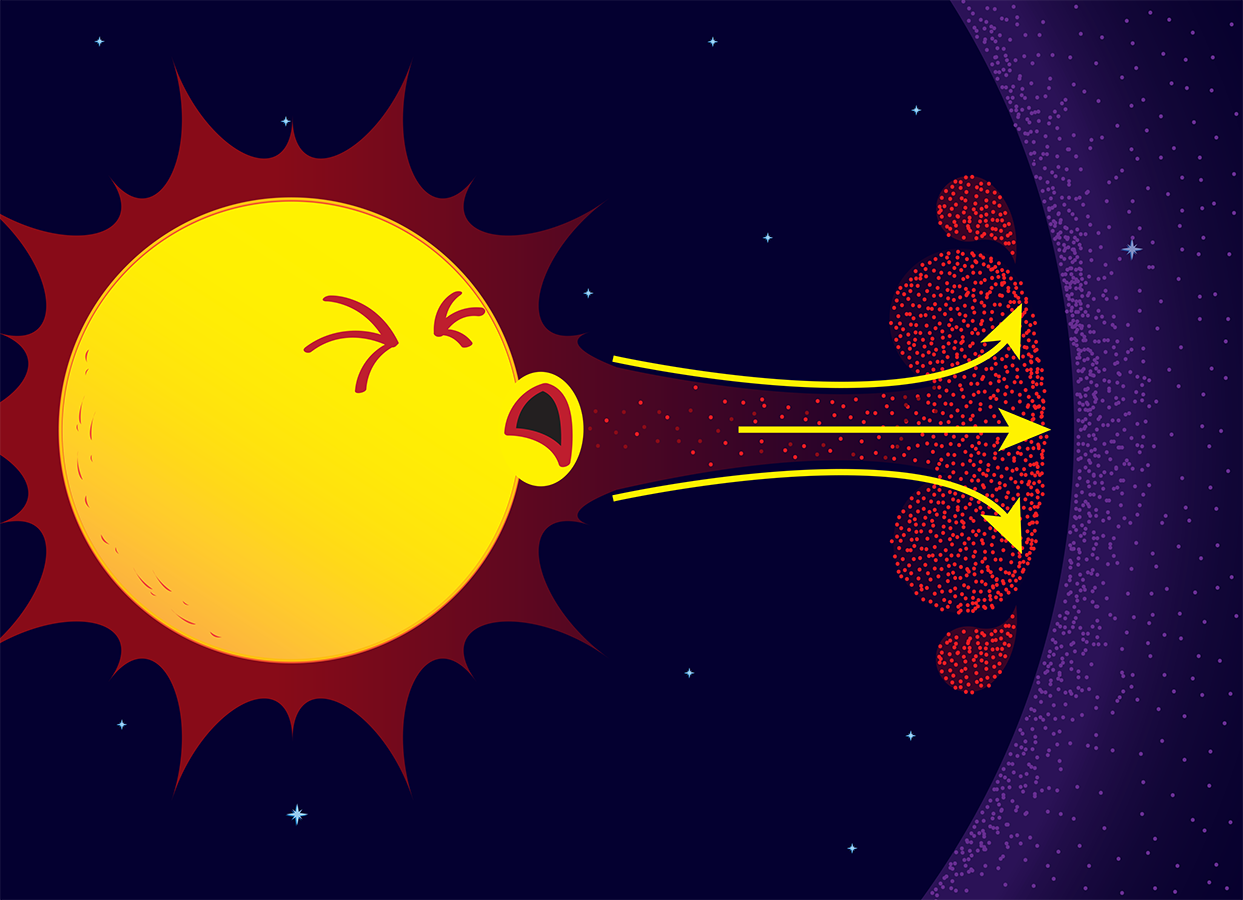Every day, since the world is a world, the sun rises through the eastern horizon of the earth and sets in the west. It may be light years away, but our star is so bright that we can't look at it directly without taking damage. Then what is the sun made of?

What is the sun?
On its surface, the Sun has temperatures that can reach up to 5.500º C, a fact that can completely melt any probe that tries to approach and land, even from a good distance. It's literally too hot to get to, but that doesn't mean it can't be studied.
There are some techniques through which we have been able to begin to discover the secrets of the stars that are in the night sky, including our sun, and in order to explain it, we are going to make a little history.
scattering the light
In the year 1802, observing where the sun rises, a scientist of English origin named William Hyde Wollaston managed to separate sunlight by means of a prism and managed to observe something he did not expect, which are the dark lines in the spectrum. Years later, the German optician Joseph von Fraunhofer created a special device, called a spectrometer, with which it is possible to scatter light better, and he, too, was able to observe that there were more of these conspicuous dark lines.
Scientists immediately noted that the dark lines showed up where there were no colors in the spectrum, because there were elements in and around the Sun that were absorbing those specific light waves. Therefore, it was concluded that these dark lines showed the presence of some elements such as calcium, sodium and hydrogen.
It was a profound, strikingly beautiful and simple discovery, but it also taught us several key elements of the star closest to us. However, as physicist Philipp Podsiadlowski has also expressed, this analysis has some limitations. He makes this indication because the theories only explain to us about the composition of the sun's surface, but they do not indicate What is the sun made of?
These observations and conclusions lead us to wonder what is inside the sun and how it acquired all its energy.
Underground
At the beginning of the XNUMXth century, the thesis was proposed that if hydrogen atoms were able to fuse, it was possible that a completely different element could be created, which is helium, and energy be released in the middle of that process. The Sun was therefore rich in hydrogen and helium, and owes its enormous energy power to the formation of the latter element from the former. But this theory still had to be proven.
In the year 1930 it was discovered that solar energy was due to this fusion, but that too was only a theory according to the scientist Podsiadlowski. In order to learn more about the star on which the life of our world depends, it was necessary to enter the interior of the Earth.
To do this, they had to bury the experiments that were launched under the mountains. That is how the Japanese Super-Kamiokande (Super-K) detector was designed. Thus, about 1.000 meters below the surface, there is a room that has a sad and strange appearance, it contains a shallow lake of pure water and 13.000 spherical objects cover the walls, the ceiling and the floor under water.
It looks like a science fiction device, but the function of Super-K is to try to better understand how the Sun works, taking advantage of the fact that each element has a unique absorption spectrum.
Being inside the Earth, it is understood that the Super-K has not been created to detect light. Instead, what is expected is that very special particles will be created from the center of our star and that they will be able to fly through the matter. There are many trillions of these passing through every second. And if these special detectors didn't exist, we wouldn't have known they were there.
But the Super-K is capable of making several of them known, about 40 a day, because of its special light detector that was invented to capture the moment in which these particles, called neutrinos, come to interact with their pure water lake The light that is created is very weak, but it creates a kind of halo that can be picked up by the incredibly sensitive light detectors.
The fusion of atoms inside stars explains the formation of neutrinos. Several special types of neutrinos that have been identified with this method are considered to be clear evidence of the nuclear fusion of hydrogen into helium that occurs inside the Sun, and no other explanation for how neutrinos are formed is known. But being able to study them will allow us to observe what is happening inside the Sun in almost real time.
Sunspots
It is easy to get the idea that the Sun is a permanent element. But this is not so, because the stars have cycles and life expectancies, which change according to their size and proportion. In the 1980s, researchers working on the Solar Maximum Mission noted that over the past 10 years, the Sun's energy has faded and then been able to regain lost energy.
It was also unthinkable how many sunspots, which are areas of the Sun that have lower temperatures, were related to this activity. The more spots there were, the more energy was released. It seems like a contradiction, but the more sunspots there are, that is, the more cold elements there are, the hotter the Sun becomes, and this is confirmed by Simon Foester, from Imperial College London, United Kingdom.
What did scientists discover?
They found that there are particularly bright areas on the sun's surface, which are called torches, which arise along with sunspots but have both sides visible, and it is these torches from which the additional energy is released, by means of rays. X and radio waves.
Another issue is that it is possible to detect solar flares, which are huge flashes of matter that have their origin in the formation of an accumulation of magnetic energy from the Sun. That is, that stars are capable of emitting radiation through the electromagnetic spectrum , and these eruptions can be observed by means of X-ray detectors and can help us to know what is the sun made of This leads us to be able to observe the Characteristics of Solar Radiation.
Although there are other ways to detect them. One of the ones that is used is through radio waves, and another way is through electromagnetic radiation. The huge Jodrell Bank radio telescope in England is the first of its kind in the world and is capable of detecting solar flares, which has been confirmed by the scientist Tim O'Brien, from the University of Manchester, who works on the same.
In the event that a star behaves normally, that is, it does not have much activity, it will not emit too many radio waves. However, when stars are born or die, they are capable of generating enormous emissions. What you can see are the active elements. We observe the explosions of the stars, shock waves and stellar winds generated.
Radio telescopes are also used by the Irish scientist Jocelyn Bell Burnell in order to discover pulsars, which is a special kind of neutron star. Neutron stars form after gargantuan explosions, which occur when a star collapses in on itself to become incredibly dense.
Pulsars are examples of a class of stars that emit electromagnetic radiation, which can be picked up by radio telescopes. It is a signal that is not very regular, that is capable of being emitted every few milliseconds and that caused, at first, several researchers to wonder if it was ways of communicating of intelligent species that are in another part of the Universe.
The emission of pulsars
Due to the discovery of many more pulsars, it is now accepted that this emission of regular pulses is caused by the spin of the star itself. If you look at the sky in that line of sight, you might see a regular flash of light passing by, much like a lighthouse would behave.
Some stars are meant to be pulsars
Fortunately, our sun is not one of them, because it is too small to explode in a supernova reaction when it reaches the end of its lifetime. In fact, when a stellar explosion occurs, it has been observed that a supernova has been created that is 570.000 times brighter than the Sun.
What is your destiny from the sun?
It is known from observation of other stars in our galaxy that there is a wide range of options. But, based on what is known about the mass of our Sun and making a comparison with other stars, the future of the Sun seems to be very clear and that is that it will gradually expand until the end of its life, which will happen in another 5.000 billion years or so, until it becomes a red giant.
Then, after a number of explosions, only an inner carbon core will remain, which is speculated to be the same size as the Earth, and will slowly cool for a period of more than a billion years. The interesting thing is that there are many mysteries that remain hidden about the Sun, and many relevant projects that want to help reveal them.
An example of these initiatives is NASA's Solar Probe Plus mission, which will try to get closer to the Sun than ever before, to find out what the Sun is made of., in order to try to find out how the solar winds originate and discover the reason why the Sun's corona, which is the plasma aura around the star, is hotter than its surface. So far, we only know a few of the essential mysteries of the sun.
Energy
Physicists use the term energy to refer to the ability to change state or produce another because of movement or that generates electromagnetic radiation, which can be light or heat, which is why the word comes from the Greek and means force. in action.
In the international system, energy is measured in Joules, but in common vocabulary, it is mostly expressed in kilowatt hours, but we must remember that, according to the first law of thermodynamics, energy is conserved within a closed system.
Thermodynamics
This is based on the first and second principles, that is, energy is conserved and entropy is increased, these principles impose great restrictions on any model of the universe, in addition, several properties of space and time are being born in a thermodynamic sense .
Therefore, this knowledge should not be considered as basic constructions of essential interactions, in this sense, space-time is thermodynamic, in addition, if it is accepted to put together statistical arguments, it will be necessary to ask if the magnitudes of the universe are probably thermodynamic, then our universe would be governed by entropic magnitudes rather than by absolute forces.
Electromagnetism
This force is based on Maxwell's wave theory and its equations, but these theories are not very clearly understood, but they are not based on his original interpretation of the relationship between the E and B fields, but on Ludvig Lorenz's theory, with which Maxwell never agreed.
Maxwell thought that these two fields must be induced cyclically, so that the speed of light is preserved, unlike Lorenz, he thought that in the two fields it is convenient to obtain a maximum intensity in a synchronized way, at the same time, to preserve that speed.
Then the what is the sun made of, because of hydrogen and helium, in constant interaction, which is capable of producing energy, light, heat and electromagnetism, which absolutely influence the conservation of life on our planet.



